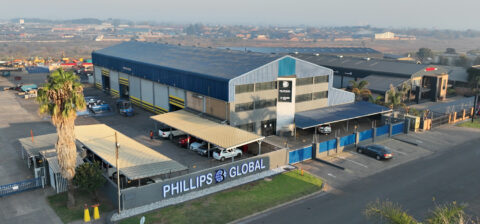Financial Mail Office
Do Open-plan Offices Really Work?
Melanie Lamberti recalls a time when, as an HR manager for a Durban firm, she found herself standing in an open-plan office for the first time. “Imagine how many times I had to book a meeting room or wander the corridors with my cellphone trying to find a free room just to hold a quick confidential conversation,” she says. “It was madness, especially when you’re scurrying through the to-do list.”
For many, the open-plan office is the pinnacle of office design – transparent, airy and bright. Think of the recent expansion of Facebook’s Menlo Park in California, which accommodates 3 000 employees in one open office.
“Managers opting for open-plan offices very likely have good intentions in providing a seemingly egalitarian and accessible workplace,” comments Michelle Ludwig, Director at Ludwig Design Consulting. But it doesn’t always work out that way.
Cheaper rental space, greater collaboration
There are obvious cost savings associated with open-plan offices, says registered counsellor Liska Muller. “The biggest advantage of open-plan offices is that they minimise commercial rental space and maximise the number of employees that can fit into the available office space.”
Then there’s the perception that open offices are places where collaboration and creativity can flourish. “In certain work contexts, open-plan offices are incredibly beneficial, like where teams of people are all working on the same project and there is a high need for collective delivery and for everyone to be tracking progress simultaneously,” adds Muller.
She gives the example of a fashion house,
where a team of buyers, garment technologists, planners and merchandisers all work on the delivery of the same product line. “In this instance, an open-plan office works superbly, as ideas are shared, and generally the team derives energy and momentum from the success of the interdependent functions.”
On display
But just as reducing floor space and boosting collaboration are pluses, there are many downsides to open offices. “When no private space options are provided in the design, employees tend to rely on coping mechanisms to create the conditions they need to be productive,” says Michelle Ludwig. This could mean wearing headphones, piling files around your desk or working at unsociable hours when the office is quieter.
“Having worked in an open-plan office, any phone call, whether professional or especially if it’s personal, feels like it is on display for all around,” asserts Ludwig. “The previous cubicle approach didn’t necessarily remove this acoustic problem, but it did foster an atmosphere of focusing on your own work while ignoring others’ activities.”
Ludwig is ambivalent about whether open-plan offices inhibit productivity, saying it all depends on the rest of the office design, as well as the company culture. But it’s clear that many employees struggle. One executive at a top blue-chip company confided, “Open-plan offices are meant to foster verbal communication, but in that they fail completely. What I’ve observed is that everyone is so concerned about disturbing each other that they wear headphones to block out the noise of other conversations. They now send emails to the people sitting next to them.”
Introvert or extrovert, closed or open offices?
I can’t focus: “It takes me about 30 minutes to get to a point of heightened concentration, but the counter starts afresh each time I’m interrupted. As a knowledge worker, constantly being interrupted reduces my productivity and delivery for my clients. If an open-plan area is needed for people to collaborate, then something isn’t right in the culture.” — Philip Widan, business analyst
I get things done quickly: “I like an open-plan office. It promotes collaboration, as opposed to working in silos. There is team spirit in an open office and it’s easier to bounce ideas around and make decisions when you’re within arm’s reach of each other. What I’ve also come to notice is the culture of hierarchy in the workplace is diffused by having an open space in which to work.” — Babalwa Ontjies, operations specialist
Less face-to-face interaction
This is a common observation. According to a study published by two Harvard researchers in 2018, open offices cause verbal communication to drop by 70%, with an associated increase in electronic communication.
By tracking workers wearing wearable electronic devices in two Fortune 500 companies, Ethan Bernstein and Stephen Turban were able to see what effect moving from cubicles to an open-plan office had on them. Rather than promoting one-on-one communication, the move actually triggered a natural human reaction to withdraw from colleagues, and interact over email and instant messaging instead.
In order to mitigate this, “companies should offer a variety of spaces in which to work – phone booths, small conference rooms, coffee shop-like areas, chill rooms or private focus rooms,” comments Ludwig. “Employees can then choose what suits them for their task at hand, empowering them.”
The fact that technology is now untethered will also inform the workplace of the future, she believes. “Not only can work move with you, but the younger generations only.”
know this seamless way of manoeuvring from laptop to phone, from home to office, all using cloud technology,” she says. “They have developed work aptitudes in this way that then warrant spaces, and office work policies, to evolve as well.”






 Sign-up and receive the Business Media MAGS newsletter OR SA Mining newsletter straight to your inbox.
Sign-up and receive the Business Media MAGS newsletter OR SA Mining newsletter straight to your inbox.